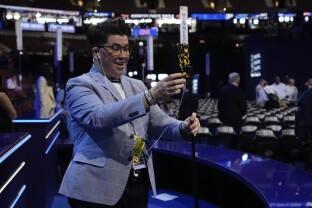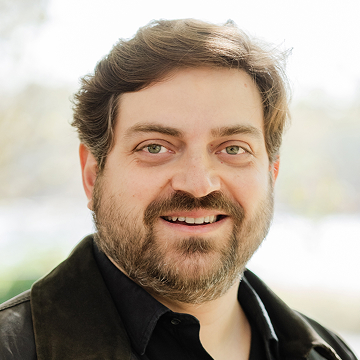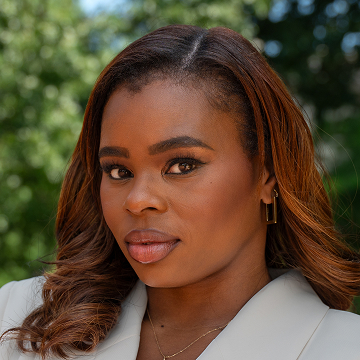CHICAGO — Just before the Democratic National Convention’s roll call vote — a light show hosted by a DJ and streamed vertically on TikTok — a photographer with a 110-year-old camera came over the loudspeakers and begged delegates to stand perfectly still for the oldest social media post imaginable.
“Is there a better way to do this?” asked a convention attendee to no one in particular, as everyone in the United Center stood for 20 seconds of strained, frozen silence for the process to complete. Any movement at all would blur the panoramic Official Convention Photo, the photographer Abbas Shirmohammadi warned repeatedly as he wielded a camera built in the 1910s.
That is maybe the central question of any convention when it comes to how a party communicates its values and finds new voters. That is, after all, the job of a political convention in the era of primaries that (usually) choose the nominee.
But in Chicago, no one can decide what old things to pull back on and new things to put forward. There’s the really old camera, and, new to this convention, 200 content creators officially credentialed to share the week with their social media followers.
And feeling stuck, and frustrated, in between, are thousands of traditional media reporters who have had far less access this year than in past presidential conventions.
Party officials created a special section of seats right on the floor next to delegates for content creators. Some influencers were specifically invited by the party to attend. The creators paid their own way to be in Chicago, like reporters, but have been given a support infrastructure different from the one credentialed reporters get.
There are staff assigned especially to them, they have a “creator lounge” that is located in a far more desirable spot than the filing centers just outside the United Center building set aside for journalists. They have been given access to things that reporters have not.
The creators say they want to make a political convention relevant to the modern channel-flipper by doing what they do: creating. The content the influencers have created so far in Chicago may not feel so mission-driven to a novice eye. They have done day-in-the-life posts about getting around the United Center and similar hokey stuff. But what this is about, they say, is creating an atmosphere for their followers to feel that they are being heard by the Democrats.
“Most people in their lifetimes will never be able to come to the Democratic convention, right?” said Eve, one half of a creator team with her friend Pari who applied for the DNC program. “When we announced that we were coming, they were just like, ‘Oh my god, we get to watch you support this person who we’re, like, super excited about.’”
The pair have a background in public health and make content focused on how reproductive rights are the backbone of equality for women and what could happen to many other parts of a woman’s life if those rights are taken away. So they don’t need Democratic talking points. They could write them.
“They were literally like, ‘We accepted you because we value your voices and we want you to bring those voices to the convention and say whatever you want.’ I personally have not received a single talking point,” Eve said.
The creators are here as a “better way” for convention planners to do what they’re always trying to do: sell. The four days on stage in Chicago are a carefully curated version of a Democratic Party dream life. There is no drama on stage.
And while traditional media reporters have been upset all week that creators have an official place at the DNC while their physical workspace has shrunk and their ability to move freely on the convention floor has often been limited, the creators don’t know why anyone is confused about their role.
“I actually haven’t seen those stories,” said Kory Aversa, an LGBTQ+ issues-focused content creator from Philadelphia who is credentialed for the convention. Like all the credentialed creators who spoke to NOTUS this week, Aversa said he had no idea his appearance was controversial until reporters started asking about it.
“I don’t think creators are replacing traditional press,” he said. “I would hope that they’re not thinking that.”
“We look at it as a media ecosystem,” Pari said. Eve and Pari’s channel talks about news articles all the time, putting news into the channel’s frame about abortion rights. “Your traditional media meets their audience in a certain place, and creators meet their audience in a different place, and I don’t think that those are at odds with one another.”
These creators openly want Vice President Kamala Harris and the Democrats to win in November and also spend their lives building audiences of people who listen to them and agree with them. Reporters want more access, but what’s seen as good convention reporting often is about showing the things that organizers specifically do not want Americans at home to see. The creators are not here to do that.
They’re here to answer the question asked by that Democrat in the 300 section as she watched delegates freeze in place as the technology of the early 20th century required them to. A question about what is the best way to do what the Democrats designed this convention to do?
“I will say, I was surprised the first time I got a question about this,” Pari said. “I was like, ‘Wait, you are upset about this?’”
—
Evan McMorris-Santoro is a reporter at NOTUS. Claire Heddles contributed reporting.
Sign in
Log into your free account with your email. Don’t have one?
Check your email for a one-time code.
We sent a 4-digit code to . Enter the pin to confirm your account.
New code will be available in 1:00
Let’s try this again.
We encountered an error with the passcode sent to . Please reenter your email.


